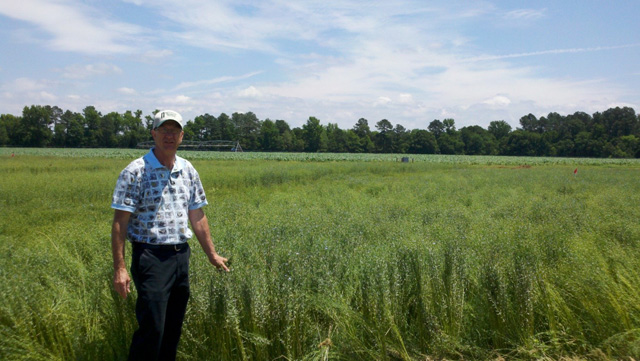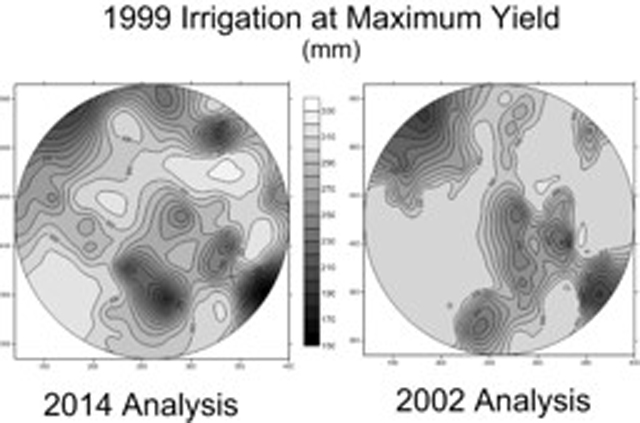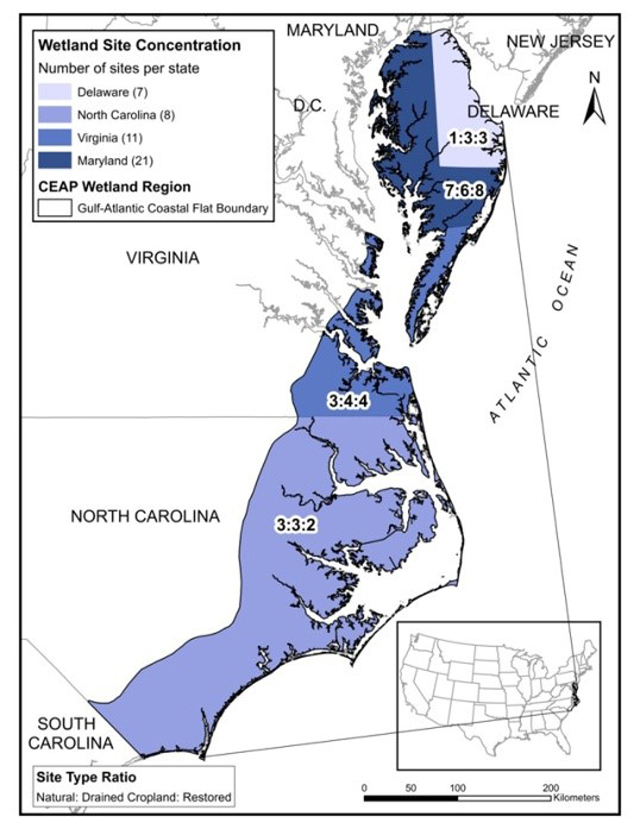| Water Project |

|

Flax Fiber and Seed Yield: Flax has been considered a potential winter crop in the Southeast for many years, but limited data on the potential of using irrigation to increase the fiber and seed yield in the region is available. In this research, irrigation increased straw yield in one of three years, but did not increase seed yield in any year.
Resource:
Irrigation and cultivar effect ... (PDF)

Irrigation Management to Protect Water Quality: Although agriculture is one of the largest sources of nutrient losses into the environment, mainly nitrogen fertilization of crops, proper irrigation management can reduce nutrient leaching while maintaining crop yield. A three-year corn field study was conducted to evaluate the effects of three irrigation scheduling methods and two nitrogen rates on pore water nitrate and phosphate in four soil types with corn production in US Coastal Plain Region. Using an expert system for irrigation management resulted in lower soil water pore nitrate and phosphate concentrations. These results indicate the irrigation scheduling method may be a way of achieving optimum yields while potentially minimizing potential nutrient losses.
Resource:
Impact of irrigation scheduling ... (PDF)

Spatial Analysis of Crop Responses: Site-specific variable rate irrigation is beginning to be widely accepted as a tool to allocate water spatially to improve water use efficiently. We investigated how to calculate and estimate the variables that irrigation managers would need to make informed decisions for managing spatial irrigation, utilizing a new analysis approach which uses a spatially explicit analysis model to estimated spatial crop responses throughout the entire field. The new analysis calculated the estimated yield in good agreement with the observed yields and more accurately accounted for the low and high yields. Results this analysis should useful for design and management of both conventional irrigation and variable rate irrigation systems
Resource:
Spatial analysis ... (PDF)

Variable-rate Irrigation: Variable rate irrigation offers the potential to improve the efficiency of center pivot irrigation. Variable rate irrigation systems are commercially available, but they are not widely used because better methods to make application prescriptions are needed. Scientists in Florence, SC found that for corn, using remotely sensed canopy reflectance provided similar irrigation prescription maps to the more labor intensive method of using numerous soil water monitoring devices. These results should be useful to farmers, consultants and industry in managing variable-rate irrigation systems.
Resource:
Corn yield response ... (PDF)

Wetland Restoration in the DelMarVa and North Carolina Coastal Plain Region: In collaboration with the National Resource Conservation Service (NRCS), ARS researchers at the Coastal Plains Soil, Water, and Plant Research Center have performed analysis on the hydrological restoration of wetlands that were previously drained for agricultural purposes. This work was performed as part of the USDA Conservation Effects Assessment Project of Mid-Atlantic Regional Wetlands. This research revealed shifts in a number of physicochemical and biological properties to a closer approximation to natural wetlands, indicating that restoration efforts results were consistent with original conservation goals, however an agricultural legacy does remain in all restored wetland sites.
Resources:
Wetland Conservation Practices in the Mid-Atlantic Region... (Report)
Topographic and physicochemical controls... (PDF)
Soil Physicochemical Conditions... (PDF)
